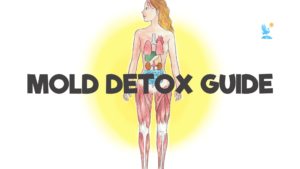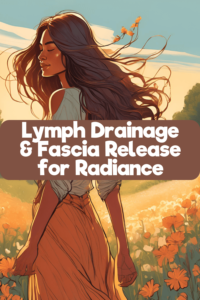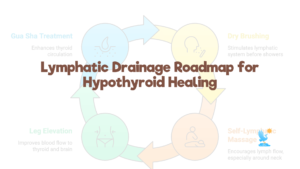Natural Sun Protection: How to Protect Your Skin from Sun Damage Naturally

Natural sun protection is all about focusing on what you put in your body so that you do not have to put toxic things on the outside of your body to avoid burning in the sun.
Key Insights
-
- Why natural sun protection is the best approach for long-term skin health.
-
- The problem with relying solely on conventional sunscreen.
-
- How to build internal resilience to the sun while supporting overall wellness.
- DIY Natural Sun Protection Recipes
- How to build internal resilience to the sun while supporting overall wellness.

So, if you want the short answer, stop eating seed oils for 6 months.
These oils take at least 4-6 months to clear from your body.
These oils are extremely high in PUFA’s, which are unstable and oxidize fast.
Here is a quick list of things you will want to avoid:
- canola
- soybean
- sunflower
- safflower
- corn
- grapeseed oil
Now, what happens when you consume them?
They are unstable and oxidize in your body, and then the sun bakes them, causing burning and irritated skin.
Look, as soon as I learned this and followed the protocol you are learning here on my blog, I stopped burning!
I stopped using seed oils, waited 6 months, and gradually got a sun tan while I incorporated sun gazing, antioxidant-rich foods, and wise interaction with the sun.
Learn more about seed oils and why you want to avoid them in my blog post here.
Then, start slowly introducing your body to the sun.
Start in the early hours or late day sun.
Then progress to solar noon time so that you can get the valuable vitamin D your body requires to keep your immune system happy and humming.
You then can build internal protection with healthy saturated fats, and foods rich in pigment such as berries.
Sometimes, regardless of how great your diet is, you do need sun protection if you will be out in the sun for a long time.
In these cases, you can opt for a clean sun-protective recipe with ingredients free of endocrine disruptors.
Go for non-toxic zinc sunscreens and large brimmed hats and beach cover-ups.
Sun Food Tips
Eat a handful of goji berries before embarking on a trek in the sun.
Or drink a chlorophyll-rich drink before heading out.
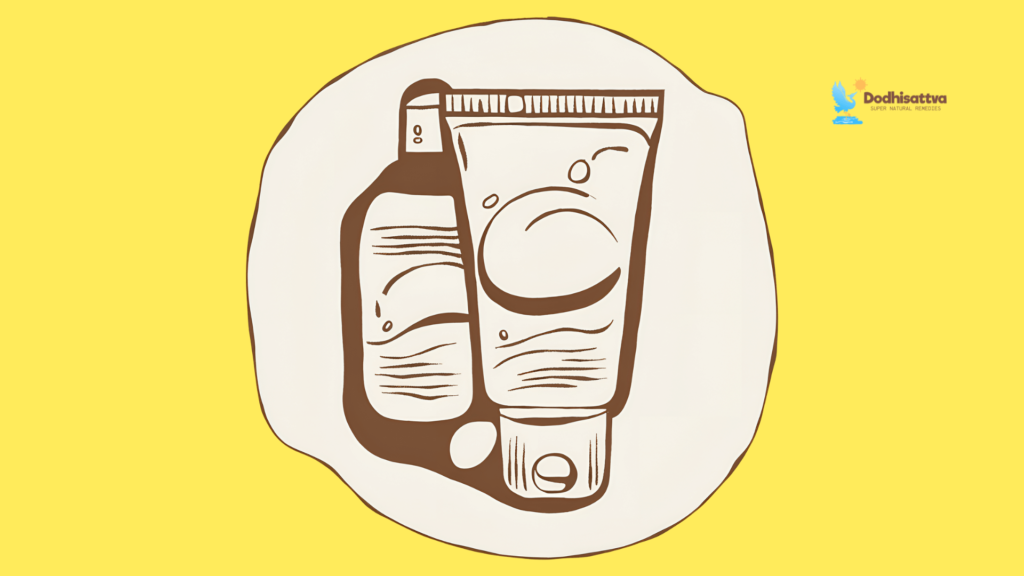
The Problem With Traditional Sunscreen
Did you know that in May of 2019, the FDA issued a report sharing that sunscreen chemicals, when used for just one day, get into the bloodstream and exceed the FDA standards for chemicals like Oxybenzone?
These chemicals change your body’s metabolic health and strain organs such as the liver and kidneys.
One study showed that chemicals in sunscreen are endocrine disruptors, which alter your hormones.
The chemicals in commercial sunscreen can also cause allergic reactions.
What is more, they can harm the environment and contribute to coral reef bleaching.
They can make you sick and contribute to disease.
There is increasing concern about the build of phthalates in children that use things like commercial sunblock.
These are endocrine disruptors, and you can read more about the study here.

1. The Foundation of Natural Sun Protection Starts with Diet
-
- The role of diet in how your skin reacts to the sun.
-
- Avoid seed oils (PUFAs): How they make skin more prone to burning and oxidative damage.
-
- If you’ve been consuming seed oils, wait six months before full sun exposure to rebuild healthy skin at the cellular level.
-
- Focus on saturated fats like grass-fed butter, ghee, and coconut oil for skin resilience.

2. Build Internal Sun Protection with Antioxidants & Pigmented Superfoods
-
- Natural sun protection is about building resilience, not avoiding the sun.
-
- The healthiest skin comes from smart sun exposure + internal nutrition.
-
- Ditching seed oils, eating the right nutrients, and getting gradual exposure sets your skin up for a lifetime of healthy sun interaction.
- Consider creating your own sunblock or buying from a small artisan supplier who is transparent about their ingredients.
- Ditching seed oils, eating the right nutrients, and getting gradual exposure sets your skin up for a lifetime of healthy sun interaction.
-
- Aloe vera and cold-pressed coconut oil to soothe sun-exposed skin.
-
- Red light therapy and infrared sauna to reduce sun-induced oxidative stress.
-
- Hydration & mineral replenishment after sun exposure.
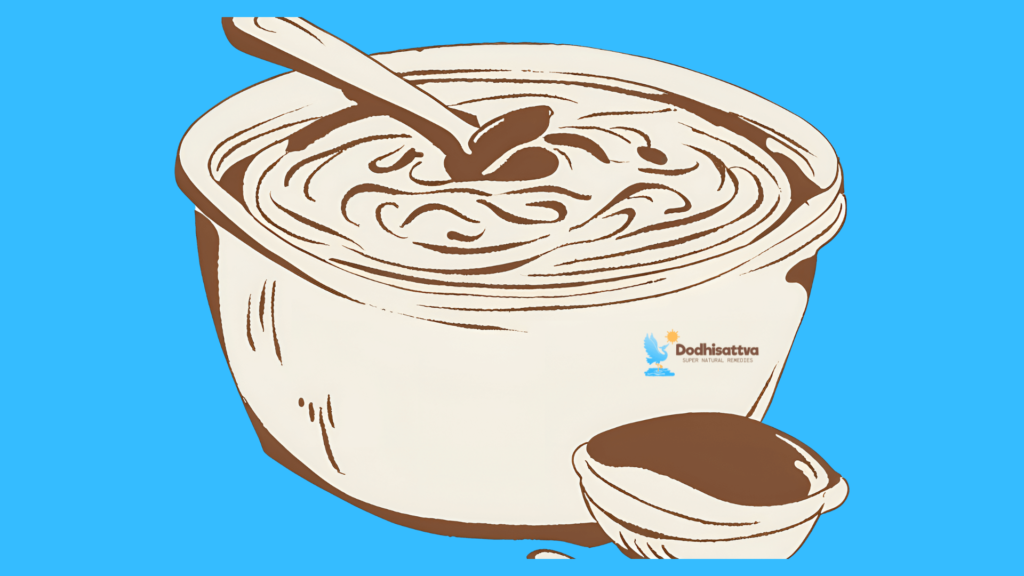
DIY Natural Sun Protection Recipes
1. Basic Non-Toxic DIY Sunscreen (Zinc Oxide-Based)
SPF Estimate: 20-30
This recipe includes non-nano zinc oxide, which is the only FDA-approved natural UV blocker.
Ingredients:
- ½ cup coconut oil (SPF ~4, provides moisture and slight UV protection)
- ¼ cup shea butter (SPF ~3-6, nourishes skin)
- ¼ cup beeswax (creates a water-resistant barrier)
- 2 tbsp non-nano zinc oxide (the main active UV blocker)
- 1 tsp red raspberry seed oil (SPF ~25-50, rich in antioxidants)
- 1 tsp carrot seed oil (SPF ~35-40, supports skin repair)
- Optional: 5-10 drops essential oils (lavender, chamomile, or myrrh for skin-soothing benefits)
Instructions:
- Melt the coconut oil, shea butter, and beeswax in a double boiler.
- Remove from heat and let cool slightly.
- Stir in zinc oxide, raspberry seed oil, and carrot seed oil (wear a mask when handling zinc oxide to avoid inhaling it).
- Add essential oils if using.
- Store in a glass jar and apply as needed.
2. Lightweight DIY Sunscreen Lotion (Non-Greasy)
SPF Estimate: 15-20
This one is less greasy than the coconut oil version and absorbs well.
Ingredients:
- ¼ cup aloe vera gel (soothes skin and hydrates)
- ¼ cup jojoba oil (lightweight, SPF ~5)
- 1 tbsp beeswax (for a slightly thicker consistency)
- 1 tbsp non-nano zinc oxide (for UV protection)
- 1 tsp red raspberry seed oil
- 1 tsp carrot seed oil
- Optional: 5 drops lavender essential oil
Instructions:
- Heat beeswax in a double boiler until melted.
- Remove from heat and coo slightly. Stir in jojoba oil, aloe vera gel, zinc oxide, and oils.
- Blend well and store in a squeeze bottle.
Conclusion
-
- Natural sun protection is about building resilience, not avoiding the sun.
-
- The healthiest skin comes from smart sun exposure + internal nutrition.
-
- Ditching seed oils, eating the right nutrients, and getting gradual exposure sets your skin up for a lifetime of healthy sun interaction.
- Consider creating your own sunblock or buying from a small artisan supplier who is transparent about their ingredients.
- Ditching seed oils, eating the right nutrients, and getting gradual exposure sets your skin up for a lifetime of healthy sun interaction.
-
- Start early in the season (late winter/early spring) by exposing as much skin as possible on warm days.
For example I was out in late February when it was around 48-50 degrees exposing my skin to the sun for about 20 minutes.
If you can keep this up through March until the Spring Equinox you build a healthy base.
- Start early in the season (late winter/early spring) by exposing as much skin as possible on warm days.
-
- Begin with early morning and late afternoon sun for safe acclimation.
-
- Sun-gazing at sunrise and sunset supports skin and circadian rhythms.
You may enjoy my blog post here about the power of sun gazing and my guided meditation on sun gazing.
In summary, sun gazing can help the body produce melanin to prepare for the sun by providing natural UV protection.
- Sun-gazing at sunrise and sunset supports skin and circadian rhythms.
-
- Over time, moderate exposure to the midday sun builds melanin naturally.
- Don’t overdo a good thing and use wide-brimmed hats and beach coverups to protect your skin if you are out for a long time.
- Over time, moderate exposure to the midday sun builds melanin naturally.






